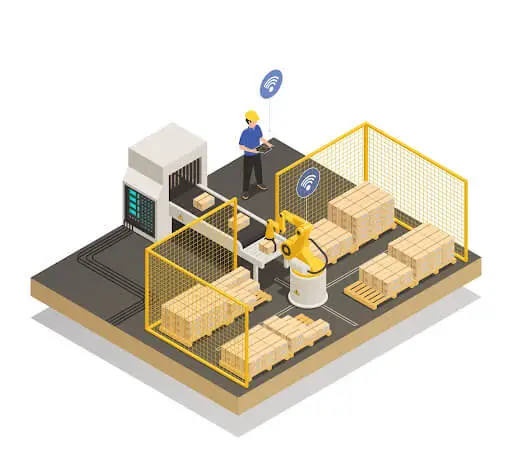The Financial Impacts: How Damage Claim Images Lead to Faster Payments
Have you ever waited for what seemed like an eternity to receive an insurance payment? You’re not alone. The insurance claim process can be notoriously slow, but there’s a game-changer you might not have considered: damage claim images.
In this blog, we’ll look at why pictures can speed up your insurance payouts, the financial benefits, and how dimensional scanners can supercharge this process. Ready? Let’s dive in!
Why Damage Claim Images Matter?
Understanding why damage claim images are essential can significantly impact how quickly your claims get processed and how smoothly the entire procedure flows.
Here’s a bit more detail on why they are so crucial:
Psychological Factor: “Seeing is Believing”
You know how people say, “A picture is worth a thousand words”? Well, when it comes to insurance claims, a good photo can also be worth a lot of money and time. If someone who’s deciding on your claim sees a clear picture of the damage, it’s way easier for them to get what happened.
People usually understand things quicker when they see a picture rather than read a bunch of words. A good photo makes it clear how bad the damage is, so the person looking at your claim can decide faster. A clear photo takes away the guesswork and makes it hard for anyone to argue with your claim.
Legal Advantage: Providing Strong Evidence
Legal fights over insurance claims can take forever and cost a lot. One way to avoid this hassle is by having strong proof, and good photos can help with that. Clear, well-timed pictures show exactly what the damage looked like and when it happened.
If someone questions your claim or you even must go to court, these photos can be super helpful. They make it hard for the insurance company or anyone else to argue against you, saving you time, and money on lawyer fees, and a lot of stress.

Streamlining the Claims Process
Without images, the typical claims process can become a protracted affair, requiring multiple inspections, paperwork, and back-and-forth communications between you, the insurer, and perhaps even legal entities. Each of these steps not only delays your claim but can also introduce errors or disputes that further slow down the process.
Images cut through all this. They offer a straightforward, irrefutable account of the damage that can easily be shared and examined. This expedites inspections and eliminates the need for repetitive verification procedures. It’s a win-win for everyone involved: The insurer spends less time and resources on processing the claim, and you receive your payout faster. It’s efficient at its best.
The Role of Dimensional Scanners in Capturing Parcel Images
- Accuracy and Efficiency
- Dimensional scanners are super-fast, but they’re also really accurate. When you’re using these systems to take pictures of your packages, they provide a level of detail that’s top-notch. This is handy when you need to show damage for an insurance claim.
-
Relevance to Damage Claim Images
- These dimensional scanners are great because they take pictures that can go straight into your claim’s paperwork. This means you don’t have to jump through hoops to add these images as proof. It makes the whole claims process smoother and easier for you.
-
Data Storage and Easy Retrieval
- Many modern dimensional scanners also come with built-in storage options. This makes it a breeze to save, access, and share your parcel images whenever you need to—be it for claims or record-keeping.
-
Integration with Other Systems
- Dimensional scanners can often be integrated with your existing business software. This means you can easily pull up relevant images when dealing with other parts of your business, like customer service or inventory management.
By adding a dimensional scanner to your process, you’re not just making things easier; you’re adding an extra layer of reliability and proof to your damage claims.
The Financial Impacts of Using Damage Claim Images
Understanding how using damage claim images impacts your finances can give you a clearer picture of why it’s worth investing in this practice.
Let’s dive into the details a bit:
-
Faster Approval: Shorter Processing Time
- Get Your Money Faster: When you have clear images showing the damage, the claims process speeds up. That means less time waiting and wondering when your money will arrive.
- Free Up Time for Other Tasks: The time you save waiting for claims to get approved can be spent on other important parts of your business, like improving your services or focusing on customer relations.
-
Lower Operational Costs
- Save Resources: If you’ve got images to back up your claims, you don’t have to spend as much time and effort chasing after approvals. This saves not just time but also money on staff resources.
- Avoid Costly Legal Fees: With photographic evidence, you’re less likely to get stuck in legal battles. And fewer legal troubles mean fewer legal fees to pay.
-
Increased Customer Satisfaction and Retention
- Keep Customers Happy: Nobody likes waiting, especially for money that’s owed to them. Faster claims make for satisfied customers.
- Build Loyalty: When customers see that you handle claims swiftly and transparently, they’re more likely to stick with your services in the long run.
By making the smart choice to use damage claim images, you’re not just making your life easier; you’re positively impacting your bottom line.
How to Use Damage Claim Images Effectively
Maximizing the benefits of damage claim images starts with how you capture, store, and share them. Below are some guidelines to ensure you’re doing it right.
Image Quality Matters: Tips for Taking Good Photos
- Good Lighting is Key: Proper lighting can make or break your photo. Make sure the subject is well-lit, ideally with natural light, so all details are visible.
- Stay Focused: A blurry image can be more confusing than helpful. Make sure your camera is focused on the damaged area to capture a clear, detailed image.
- Multiple Angles for a Full Picture: One photo might not show the extent of the damage. Capture multiple shots from different angles to give a comprehensive view of the situation.
Documenting and Storing Images: Best Practices
- Systematic Folder Structure: Keep your images organized by creating a logical folder structure that makes it easy to find what you’re looking for later. This could be by date, claim number, or any other system that works for you.
- Cloud Storage for Accessibility: Use cloud storage solutions for your images so you can easily access and share them from anywhere, whether you’re in the office or out in the field.
Sharing with Stakeholders: Ensuring Secure and Effective Communication
- Secure Your Communications: When you’re sending sensitive information like claim images, use encrypted emails or secure cloud links to minimize the risk of unauthorized access.
- Confirm Receipt: Once you’ve sent the images, make sure to confirm they were received. This ensures the right people have the information they need and keeps the claims process moving smoothly.
By making the extra effort to ensure high-quality, well-documented, and securely shared damage claim images, you’re putting your best foot forward in speeding up claims, saving money, and keeping your customers happy.
Conclusion
The advantages of using damage claim images are clear, from speeding up your payment to lowering your operational costs and increasing customer satisfaction. As we’ve discussed, dimensional scanners can also play a significant role in optimizing this process. So, isn’t it time you brought your claims process into the 21st century? Take that first step today.
